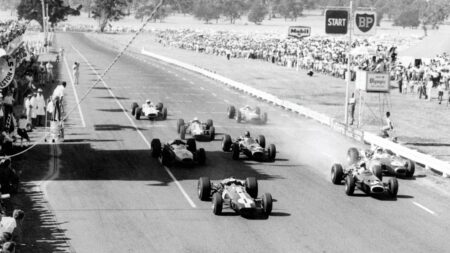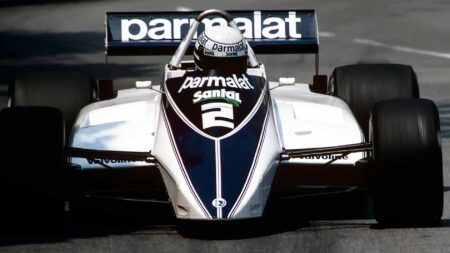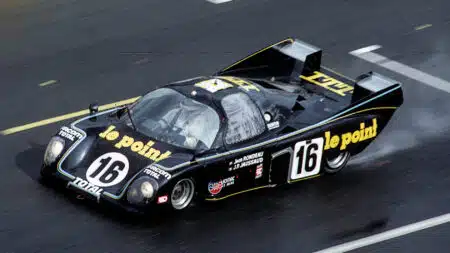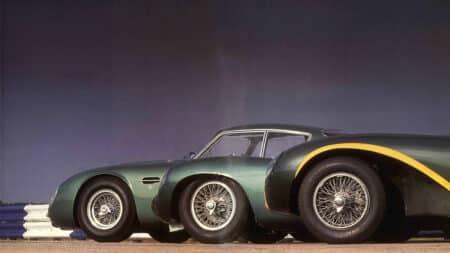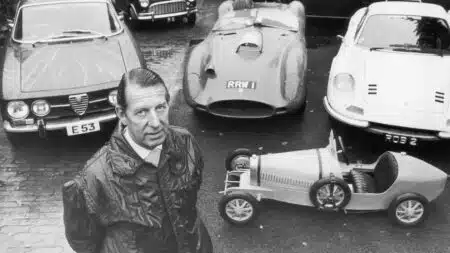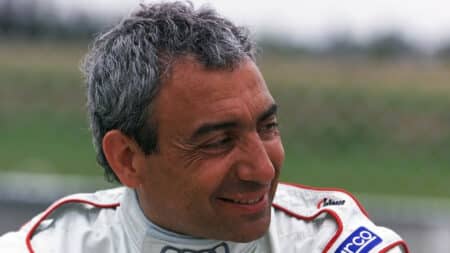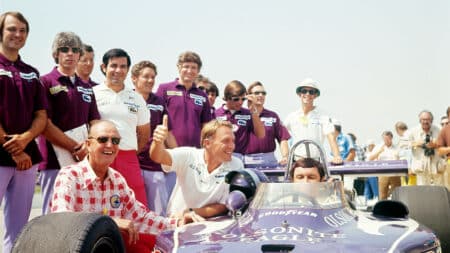With a modified F2 Lotus 32 carrying a Climax FPF, Jim Clark drove all over the competition. Four wins brought him the 1965 championship, while the Coopers were slow to catchup, even though Bruce drafted in Phil Hill, and Brabham was finding two racing arenas hard to balance. At first it was Aussie Frank Gardner’s Repco-Brabham that chased the Scot, though Bruce finished runner-up. Graham Hill had travelled down to the first round at Pukekohe to check out the series for BRM. Reports back to the Old Country, however, spoke of sun, fun and parties; with local fixer Bill Bryce arranging hotels and travel, it sounded like the package holiday from heaven.
The following year Hill was back with a full BRM team. McLaren’s new F1 project kept him in Europe, but Lotus came to defend Clark’s title with a 39 modified to pack an FPF. BRM, of course, never took the easy option and, while it struggled with the H-16 for the new 3-litre F1, bored out its dainty and reliable V8 for Tasman, first to 1900cc, later to 2100. BRM’s team manager was Tim Parnell: “We had a very generous budget, but the prize money and bonuses were good too. We took three cars, mainly because Graham was very protective and didn’t like anyone else in his car, plus three spare engines, and sometimes we would fly parts out.” They also had World Champ Hill and new star Jackie Stewart. Richard Attwood would do the races Hill chose not to.
For Stewart it was the perfect warm-up to 1966: “Tasman was a bloody good series. It was a fine test series because it came before the F1 season, so cars and drivers were race-ready. And it was a big deal to win the New Zealand or Australian GP.” In fact his attempt on the former that year was nearly scuppered because his own car was trapped in the hold of a ship. BRM PR man Rivers Fletcher had to sail out and retrieve seat, wheel and pedals to make Stewart comfortable in the spare. It worked: JYS was only headed by Hill to the flag, setting in motion a BRM steamroller which brought four wins and the Cup to Stewart, two victories to Hill and another for Attwood, leaving Jimmy Clark a single prize in a run of bad luck and breakages.

Hill leads the pack at Lakeside in 1969
Getty Images
With the eight races often a week apart, it made little sense to fly back and forth. And given the choice between a dank British winter with no racing and a hot summer being treated like film stars, who would hesitate? Graham, says Stewart, was the only driver who flew back. The other ‘foreign’ drivers signed on for the duration, moving from race to race in a group, staying at the same hotels, relishing the sun. Attwood: “It was huge fun. We all jollied around together. We were only working one day a week, but you needed stamina for the six days of pleasure!” Jackie agrees: “The races were on Saturday, not Sunday, so there was always a party afterwards. Jimmy and I would share a suite and we drove from race to race. Jaguar had given me a red 3.8 MkII and Jimmy had an E-type. There were a lot of functions too; Shell was very strong in New Zealand, and we had to sing for our supper. But we’d all end up at Chris Amon’s parents’ summer place, and that was an all-night party.”
Distances between the circuits were enormous, and the big names soon had an answer. “That was when we all learned to fly, — Jimmy, Graham and me,” says Jackie. “And Piper gave us two planes. We even flew across the water to Tasmania, in formation. So risky, looking back, but it was funny. Air Traffic Control called us up and asked, ‘Can any of you guys actually read a compass?’ If that sounds a bit cavalier from the high priest of racing safety, remember it was before his frightening Spa crash. And he wasn’t blind to the danger, even then: “Pukekohe was a great circuit, but Christchurch was a bumpy airfield covered with stones. I got hit on the head. And Longford was a safety nightmare. Bridges, brick walls, earth banks…”


